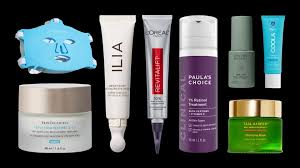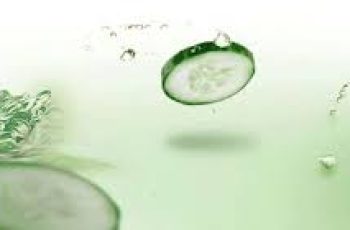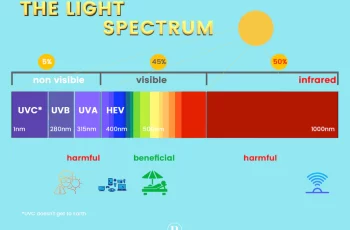
Dermatologist -recommended Antiaging Skin Care Routines for Your 30s
Your 30s mark a crucial period for establishing an effective anti-aging skincare routine. Whether you’re in your early, mid, or late 30s, this is the decade to start taking proactive measures to maintain your youthful appearance. The skin begins to show signs of aging due to accumulated damage, even if you’ve been diligent with sun protection and other preventive measures. Dermatologists often refer to early interventions to prevent skin sagging and wrinkling as “prejuvenation.” By investing in the right skincare products and routines in your 30s, you can significantly delay the need for more invasive procedures in the future, saving both time and money.
In this blog, I am going to share with you the same advice I give my 30+ dermatology patient about how to build a custom skin care routine for your 30s.
As you get started building your routine – we’d like to offer you 20% off your next purchase when you use the code STSBlog20 at checkout!
Begin antiaging ingredients in your 30s
To target all barriers to skin health that you have, use your Baumann Skin Type to build a routine
Focus on sunscreen, retinoids, antioxidants and maybe Vitamin C depending on skin type
You don’t need growth factors or exosomes yet unless you have significant sun damage
Know Your Baumann Skin Type To Customize A Routine
Before buying antiaging products and building a 30s friendly regimen, it’s essential to understand your Baumann Skin Type. This 16 skin type classification system helps identify the unique needs of your skin, allowing you to create a routine that addresses specific concerns. There is more to a skin care routine than antiaging ingredients! Depending on your Baumann Skin Type, your regimen may also need to target these issues:
Dehydration : Dry skin caused by a defective skin barrier.
Excess Sebum Production : Oily skin that requires specific cleansers and moisturizers.
Inflammation : Sensitive skin prone to acne, redness, stinging, or allergies.
Hyperpigmentation : Dark spots and uneven skin tone.
Aging : Everyone in their 30s needs to incorporate anti-aging practices into their routine.
It’s easy to determine your skin type—simply take the Baumann Skin Type Quiz, which will help you build a custom skincare routine tailored to your specific needs.
The Best Skincare Routine for Your 30s
When you are in your third decade, you definitely need antiaging ingredients such as sunscreen, and retinoids, and antioxidants. Your Baumann Skin Type will dictate what other types of products you need. Many people oversimplify their skin type by labeling it as just oily, dry, or sensitive, but the reality is more complex. You can have a combination of these traits along with other factors like a tendency towards hyperpigmentation, inflammation, or a higher risk of aging due to lifestyle habits. For example, you might have dry, rosacea-prone skin with sunspots, which classifies you as Baumann Skin Type 4: DSNW. This requires a very different skincare regimen compared to someone with Baumann Skin Type 7: OSPW. Understanding your exact skin type is crucial for selecting the right products and avoiding unnecessary expenses on ineffective treatments.
Take the Baumann Skin Type Quiz to see which of these you are. You will be able to shop by your skin type, build a routine, and read reviews by others with your same skin type. (We call these your skin twins.)
Antiaging Skin Care Routines for your 30s
By the time you are 30, you have accumulated enough damage to your skin that you should begin antiaging skincare. This is true even if you have done a wonderful job of protecting your skin from the sun.
The causes of skin aging are many including:
DNA damage
Loss of collagen, elastin and hyaluronic acid
Decrease function of stem cells
Increase in senescent cells
You are still young, and the skin damage may not be bad if you had good habits, but it is time to get started on an antiaging skin care regimen to help prevent wrinkles. This is the decade to target aging skin – whether you have wrinkles or not. Although taking our quiz and building a custom routine for your skin type is the most accurate way to go- here is my advice for 30 year olds divided by dry, oily, and sensitive skin types.
Anti-Aging Skincare Routines for Dry Skin in Your 30s
If you have dry skin, your anti-aging routine should focus on intense hydration and protecting the skin barrier. Dry skin is more prone to fine lines and wrinkles due to a lack of water that enzymes need to function. Dryness can make skin less elastic and more susceptible to environmental damage.
Morning Routine
Step 1: Cleanser
Use a hydrating, non-foaming cleanser that doesn’t strip your skin of its natural oils. A low pH cleanser may be best for some Baumann Skin Types.
Step 2: Eye Cream
Apply an eye cream to target fine lines and provide hydration to the delicate skin around your eyes.
Step 3: Anti-Aging Serum
Use a serum that targets your aging needs and any sensitivity, hyperpigmentation or adult acne.
Step 4: Moisturizer
Apply a rich, barrier repair moisturizer that provides long-lasting hydration and strengthens the skin barrier.
Step 5: Sunscreen
Finish with a broad-spectrum sunscreen to protect your skin from UV damage, which is a leading cause of premature aging.
Night Routine
Step 1: Cleanser
Begin with a gentle, hydrating cleanser to remove makeup and impurities.
Step 2: Eye Cream
Apply eye cream to hydrate and repair the delicate skin around your eyes.
Step 3: Anti-Aging Serum
Use a serum that targets any of the underlying skin issues you have such as inflammation, wrinkles, or dark spots.
Step 4: Moisturizer
Apply a thick moisturizer to lock in hydration and help push the serums into your skin.
Step 5: Retinoid
Finish with a retinoid cream to promote cell turnover and boost collagen production, helping to reduce fine lines and wrinkles. This may not be appropriate for sensitive skin types.
Anti-Aging Skincare Routines for Oily Skin in Your 30s
Oily skin, while often prone to acne and shine, has the advantage of being less susceptible to fine lines and wrinkles due to the antioxidant properties of sebum. However, managing oil production while incorporating anti-aging ingredients can be tricky.
Morning Routine
Step 1: Cleanser
Opt for a gentle foaming cleanser that removes excess oil without stripping the skin. Look for ingredients like salicylic acid to help keep pores clear.
Step 2: Eye Cream
Apply a lightweight eye cream to hydrate the under-eye area and prevent fine lines.
Step 3: Anti-Aging Serum
Use an light serum with active ingredients like Vitamin C and niacinamide to target aging while controlling oil production. However, which to use depends on what other issues you have like inflammation and hyperpigmentation.
Step 4: Moisturizer
Choose a light humectant moisturizer that hydrates without clogging pores.
Step 5: Sunscreen
Use a mattifying sunscreen that controls oil and provides broad-spectrum protection.
Night Routine
Step 1: Cleanser
Start with a foaming cleanser to remove oil, makeup, and impurities.
Step 2: Eye Cream
Apply a lightweight eye cream to nourish and protect the delicate skin around your eyes.
Step 3: Anti-Aging Serum
Use a light serum that targets your specific skin concerns, such as large pores or hyperpigmentation.
Step 4: Moisturizer
Apply a lightweight, humectant moisturizer to hydrate your skin overnight.
Step 5: Retinoid
Finish with a retinoid serum to promote cell turnover, manage oil production, and reduce the appearance of large pores.
Anti-Aging Skincare for Sensitive Skin in Your 30s
Sensitive skin can complicate your anti-aging skincare routine, especially when introducing potent ingredients like retinoids and acids. Here’s how to approach skincare based on specific concerns:
Acne
For those with sensitive, acne-prone skin, it’s crucial to choose products that won’t exacerbate breakouts while still addressing signs of aging. Non-comedogenic retinoids and soothing, anti-inflammatory ingredients like niacinamide can help manage both acne and aging without causing irritation.
Rosacea/ Facial Redness
Rosacea sufferers need to be particularly cautious with their skincare products, as many anti-aging ingredients can trigger flare-ups. Consider using gentler retinoid formulations and incorporating anti-redness products such as azelaic acid to manage rosacea symptoms while addressing aging concerns.
Skin Stinging and Irritation
If your skin tends to sting or burn with certain products, you likely have Type 3 sensitive skin (S3). This sensitivity can make it challenging to introduce new products into your routine. To avoid discomfort, steer clear of low pH products like glycolic acid and opt for barrier-repairing ingredients like ceramides and peptides. Patch-test any new products before fully incorporating them into your routine.
Allergic Skin Reactions
For those prone to allergies, identifying and avoiding trigger ingredients is vital. Hypoallergenic products and those free from fragrances and common irritants like alcohol are safer choices. Always read ingredient labels carefully and consider consulting with a dermatologist to identify potential allergens.
Sensitive Skin Care Regimen Steps
Sensitive skin has inflammation and needs anti-inflammatory ingredients in the routine. But you also need to target the cause of the inflammation. Each product should be chosen based on the subtype of sensitive skin you have. You can have one or more of the following types of sensitive skin:
Acne-prone (pimples)
Rosacea-prone (facial redness)
Stinging
Allergic
The steps for these routines will be the same but the products you choose are different for each subtype. Our scientific quiz will choose products based on which subtypes are detected in the way you answer the quiz questions.
Here is the basic structure for a 5 step routine for sensitive skin:
Morning Routine
Step 1: Cleanser
Choose a gentle cleanser that matches your skin type
Step 2: Eye Cream
Match your eye cream to any eye concerns such as fine lines and dark circles
Step 3: Treatment serum or cream
This should target inflammation and acne or rosacea. Prescription medications can be used in this step.
Step 4: Moisturizer
Choose a moisturizer to match your skin type. If you are acne-prone, choose a noncomedogenic one.
Step 5: Sunscreen
Choose one you will use every day. If you have rosacea or face stinging, avoid avobenzone and other chemicals that make skin sting.
Night Routine
Step 1: Cleanser
Choose one that will remove sunscreen and makeup without irritating skin such as the Pavise cleanser designed to remove SPF.
Step 2: Eye Cream
A hydrating barrier repair eye cream will help protect skin at night.
Step 3: Treatment Serum
Use a serum or cream that targets your cause of inflammation
Step 4: Moisturizer
Apply a soothing moisturizer
Step 5: Retinoid
Acne-prone skin types should apply a retinoid.
Antiaging Serums and Creams for 30+ Skin
We usually recommend an antiaging serums for oily skin types and antiaging creams for dry skin types. However, some ingredients cannot be made in a cream and function better in a serum- so it depends upon which antiaging ingredients are in the skincare product.
Best Antiaging Products for 30+ Skin
In your 30s, your skin begins to experience more pronounced signs of aging, even if these changes aren’t immediately visible. This is the time to start incorporating anti-aging products that target the underlying causes of skin aging, ensuring that you maintain a youthful, radiant complexion for years to come. This is what you need to know about antiaging ingredients in your 30s. Spoiler alert! The best antiaging ingredients for you in your third decade are retinoids and antioxidants.
The best antiaging ingredients to use in a skin care routine your 30s are daily SPF, retinoids and antioxidants.
Retinoids: The Most Effective Antiaging Ingredients
Retinoids are among the most effective ingredients for preventing and treating signs of aging in your 30s. They work by increasing cell turnover, improving skin texture, and boosting collagen production, which helps reduce the appearance of fine lines and wrinkles. In your 30s, starting with a low-strength retinoid can be beneficial. Retinol serums are typically recommended for oily skin, while creams may be better suited for dry skin.
Vitamin C- Protect and Restore
Vitamin C is a potent antioxidant that plays a critical role in protecting your skin from environmental damage, such as pollution and UV rays. It also stimulates collagen production, helping to keep your skin firm and smooth. You cannot make collagen without Vitamin C and an oral supply is not enough, Vitamin C is one of the best antioxidants and antiaging ingredients to use in your 30s. Incorporating a Vitamin C serum into your morning routine can brighten your complexion and reduce the appearance of hyperpigmentation. However, if you have sensitive skin, you may need to choose a gentler formulation or use it less frequently.
Exosomes: Enhance Cell Communication
Exosomes play a crucial role in cell communication, helping to maintain skin health by delivering signals between cells. You really do not need exosomes in your 30s unless you have a significant amount of sun exposure and visible signs of aging. These tiny vesicles can aid in repairing damaged skin and promoting collagen production, which becomes increasingly important as you age. Exosomes can help prevent cellular senescence.
Growth Factors: Repair and Regenerate
Growth factors are proteins that stimulate the growth and repair of skin cells, playing a significant role in maintaining skin structure and function. In your 30s, your young skin cells are probably making enough growth factors. Growth factors become more essential as you age, particularly in your 50s and beyond.
Hyaluronic Acid: Instant Hydration
Hyaluronic acid (HA) is renowned for its ability to retain moisture, giving your skin a plump, dewy appearance. While HA itself doesn’t prevent wrinkles, it supports other anti-aging products by maintaining skin hydration, making it an excellent choice for oily skin types that prefer lightweight, non-greasy moisturizers. HA serums can also be paired with other active ingredients to enhance their effectiveness.
Peptides: Versatile but Not Compatible
Peptides are short chains of amino acids that serve as the building blocks of proteins like collagen and elastin in the skin. There are many different types of peptides, each with its own function, such as boosting collagen production, reducing inflammation, or improving skin barrier function. However, peptides do not mix well with other ingredients, so the order in which they are applied and the products they are paired with matter significantly. When using peptide-based products, it’s important to follow our recommended step-by-step skincare routine to maximize their benefits. You can use peptides in your 30s, but they are not necessary like retinoids and antioxidants are.
Fight Skin Aging in Your 30s: The Science
As you enter your 30s, your skin starts to undergo changes that require targeted anti-aging strategies. Understanding what’s happening beneath the surface can help you choose the right products and practices to maintain youthful skin.
Mitochondrial Damage
Mitochondria are the powerhouses of your cells, providing the energy needed for various cellular functions. However, as you age, mitochondria accumulate damage from free radicals and senescent cells—cells that have stopped dividing but aren’t dead. These damaged mitochondria can’t regenerate themselves, leading to reduced cellular energy and visible signs of aging. Incorporating anti-aging ingredients like antioxidants and anti-inflammatories into your routine can neutralize free radicals and protect mitochondria. Ingredients that activate autophagy, a process that removes damaged cellular components, can also help maintain mitochondrial health.
Free Radicals
Free radicals are unstable molecules that damage critical cell structures, including membranes, DNA, and collagen. This damage leads to cellular dysfunction and visible aging. In your 30s, loading up on antioxidants like Vitamin C, Vitamin E, and green tea extract is essential to neutralize free radicals before they can degrade collagen and elastin fibers, which are crucial for maintaining skin firmness and elasticity.
Pollution
Daily exposure to pollution, cigarette smoke, and other environmental toxins accelerates skin aging by generating free radicals. Anti-pollution skincare ingredients, such as Crepidiastrum denticulatum extract, can provide a protective shield against this environmental assault, reducing the overall damage to your skin.
Glycation
Glycation occurs when sugars bind to collagen and elastin in your skin, causing these proteins to become rigid and malformed. This process leads to wrinkles and sagging skin. Anti-glycation ingredients, such as aminoguanidine and carnosine, can help prevent this binding process, preserving the integrity of your skin’s support structures.
UV Damage
Years of sun exposure cause genetic mutations in your skin’s DNA, leading to irregular pigmentation, wrinkles, and even precancerous changes. DNA repair enzymes, like photolyase and endonuclease, can help reverse some of this damage, making them a valuable addition to your anti-aging routine. Additionally, daily use of a broad-spectrum sunscreen is essential to prevent further UV damage.
Loss of Collagen
Collagen breakdown accelerates in your 30s, leading to the formation of fine lines and wrinkles. Retinoids are particularly effective in combating this by inhibiting collagen-destroying enzymes like collagenase. Vitamin C also plays a critical role by boosting collagen production, making the combination of these two ingredients a powerful duo for preventing sagging and maintaining skin elasticity.
Which antiaging ingredients are best for skin in your early, mid and late 30s? It depends upon your Baumann Skin Type and lifestyle habits. There are several categories of antiaging serums that might be right for you as described below. But you will get the best advcie once you know your skin type.
Find your Baumann Skin Type
If you want specific suggestions for your Baumann Skin Type and lifestyle habits- take the free 3-5 minute skin type quiz here. Once your skin type is diagnoses, you will receive a suggested regimen that you can customize at every step by browsing through all the products that we recommend for that step of your skin care regimen. You can choose by brand, price, and other preferences and you will be confident that you are using the best products to prevent aging for YOUR skin type.


